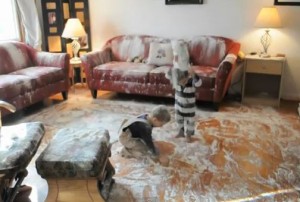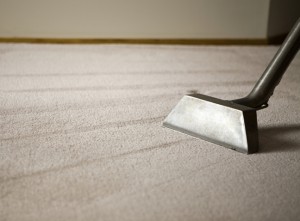If you’re in the market for hiring a professional carpet cleaning company you need to have knowledge about the various methods that are used. It’s essential to know both the advantages and disadvantages for all of the carpet cleaning methods.
- Dry Cleaning
Practically no water is used in the dry cleaning process. In this system, a powder containing solvent, water, and cleaning solution is sprinkled vigorously over the carpet area, then worked into the fibers with a mechanical brush. The dry cleaning process is supposed to draw and absorb the debris and soil. After the brush has worked over the carpet, the excess dirt and powder is vacuumed off the floor.
Advantages: Since very little water is used in this procedure, you don’t have to wait a long period of time for the carpet drying time.
Disadvantages: Thorough vacuum cleaning is critical in order to eliminate all of the powder and debris that is on the floor. Powder that is left on the floor can leave white remnants behind. This white powder may start to rub onto clothing, and dark colored shoes
- Hot Water Extraction
Also known as “steam cleaning” (although steam is not actually used), this cleaning procedure uses high pressured hot water to force soil and dirt out. Subsequently, the vacuum will suck the dirt up. The hot the water temperature helps speed up the reaction time. The carpet is exceptionally cleaned with a type of grooming brush, and next the carpet is rinsed with a cleaning apparatus. The carpet must be given a sufficient drying time in order to avoid saturation.
Advantages: Many carpet manufacturers state this is an effective way to clean their carpets. Also hot water extraction is the only safe method to clean your carpets. Hot water extraction is more effective at moving strong odors and stains rather than surface cleaners, it offers a deeper clean. Hot water extraction also leaves fewer residues behind on carpets compared to alternative cleaning methods using shampoos or powders.
Disadvantages: Even though hot water extraction is effective, it is one of the more difficult carpet cleaning techniques. Make sure to hire from a professional and experienced company, over wetting make occur from technicians that are not properly trained.
- Encapsulation
The encapsulation method uses an encapsulation chemical solution that is directly sprayed onto the carpet, and then using a machine brush or a bonnet, the solution is agitated into the carpet. The encapsulation surrounds the debris particles and crystallizes it so the soil can’t attach to more soil. Last, normal vacuuming is required to pick up the crystallized particles.
Advantages: The encapsulation technique uses the crystal chemistry to keep carpet clean longer since the dirt attracting residue is removed.
Disadvantages: When low quality encapsulation products are used, the cleaning is not scrubbed deep enough. This method is very difficult for grease filled carpets. Also, a good vacuum is required in order to fully obtain all the particles left in the carpet.
- Spin bonnet
The Spin bonnet cleaning method uses an oscillating or rotary brush that can have wet, damp or dry pads. There are two different ways, either the carpet s sprayed with a shampoo/solution, or the pads can be soaked in the cleaning solution before placing on the driver brush. The spin bonnet is supposed to lift the dirt and debris off of the carpet.
Advantages: This method of carpet cleaning can remove only a certain amount of debris off of the carpet.
Disadvantages: Many carpet manufacturers’ state this particular procedure causes fiber fraying, and damage. It offers a limited capability of cleaning since there is virtually no extraction. In addition, the detergent can be left in a pile, and re-soiling can be frequent.
Hopefully you will have a better understanding on how each carpet cleaning method works. With this knowledge it can help narrow your decision to the carpet cleaning process that will work the best for you & your carpet!



Leave A Comment